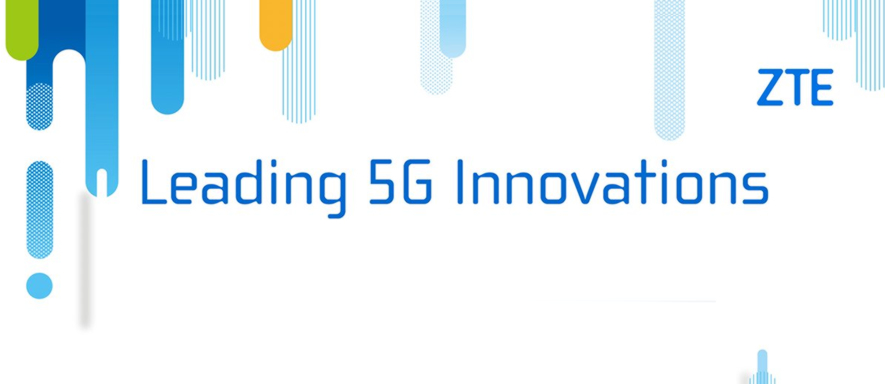ZTE Corporation, a major international provider of telecommunications, enterprise and consumer technology solutions for the Mobile Internet, was early in identifying the opportunities opened by 5G and on developing a 5G strategy, as commercial deployments of 5th generation mobile networks, more widely known as 5G, approaches.
With a focus on 5G end-to-end solutions, the company has pulled out all the stops in terms of standards formulation, research and development and validation of 5G technologies, in a move to establish industry leadership in the core technologies, the commercialization and the economies of scale for the next generation of mobile networks.
Continuously setting industry benchmarks with leading 5G technologies
ZTE has placed a strong bet on 5G and has backed up that bet with a team of more than 4,500 high-tech talents devoted to 5G research backed by an annual investment of three billion yuan (roughly US$500 million).
In addition to taking the lead in promoting massive multiple-input multiple-output (MIMO) technology, which will be key to significantly improving spectrum efficiency as well as expanding network capacity and coverage in the 5G era, ZTE was the first to apply 5G technology on a 4G network, enabling commercial 5G deployments ahead of schedule and improving the spectrum efficiency of the 4G network by a factor of eight.
The early moves have helped both operators and users benefit from 5G technology, while accelerating progress of Massive MIMO deployments amid continuous innovation, in addition to contributing technology proposals including test data results to 5G standards.
In order to meet the requirement for massive network access across 5G networks, industry-wide non-orthogonal multiple access (NOMA) has been proposed, with the Multi User Shared Access (MUSA) solution, the one proposed by ZTE, being the selected candidate. The solution enables the system to support 3-6 times of number of user accesses using the same time frequency resources, allowing for genuinely conflict-free scheduling and greatly reducing terminal power consumption.
In China’s second phase of 5G testing, the MUSA technology achieved a performance of 90million connections/MHz/hour, far exceeding the benchmark defined by the International Telecommunication Union (ITU).
Because of the originality of the leading edge MUSA technology, ZTE, as the first drafter, led the adoption of NOMA by the 3GPP RAN Working Group 1, the group responsible for the specification of the physical layer of the radio interface (radio layer 1) for 5G New Radio (NR), driving the development of industrial standards.
At the same time, with strong chip design and development ability, ZTE launched the industry’s highest integrated next generation baseband unit (NG BBU) based on a proprietary high-performance vector processing baseband chip developed in-house, and followed with the development of the industry’s lightest and smallest 5G active antenna unit (AAU) based on a highly integrated digital IF chip.
In China’s first and second phase of 5G testing, ZTE’s 5G base station not only fulfilled the basic requirements, but also completed the 26 GHz high-frequency field test, with outstanding void performance results. ZTE launched China’s third phase of 5G testing with a full range of 5G products, and completed the roll out of equipment to the market and end-to-end debugging of commercial solutions.
Taking the lead in 5G commercialization and putting together a global portfolio by entering high-end markets
Based on ZTE’s many 5G innovations, several of the world’s leading mobile network operators have chosen to partner with ZTE.
In 2017, ZTE partnered with more than 20 of the world’s leading mobile network operators in terms of 5G collaborations, including opening China’s first 5G pre-commercial base station with China Mobile, initiating the first 5G field test with Japan’s SoftBank and building Europe's first 5G pre-commercial network, among others.
Operators have lined up to collaborate with ZTE on commercializing 5G, including designing the strategy and rolling out field tests. Citing a few examples, Telefonica and ZTE have completed the 5G network architecture and load bearing test, and will further validate 5G end-to-end solutions. Orange plans to conduct a multi-site 5G independent networking architecture test with ZTE in Europe during 2018. China Mobile and ZTE have built an experimental network closely mirroring the real environment of 5G in Guangzhou province in a move to validate the 5G continuous networking capability, and plan to further expand the scale of the experimental network to cover most of Guangzhou in 2018. When carrying out the first 5G pre-commercial test in Xiong’an and Suzhou, China Telecom chose ZTE to explore innovative applications in vertical segments of the industry. In addition, the first 5G NR new open field test site constructed by China Unicom and ZTE has also completed service verification, achieving a peak rate of 2Gbps for a single UE.
In November 2017, ZTE partnered with Qualcomm and China Mobile to jointly complete the world’s first end-to-end system test based on the 3GPP R15 standard, making full use of the ultra-high bandwidth and zero wait capability of the 5G network.
ZTE has already launched a series of products for 5G commercial applications, including a 5G series of access equipment, diversified 5G bearing solutions, a flexible and efficient 5G core network, among other products covering high and low frequency bands, fully preparing operators whose goals are to achieve large-scale commercial deployment of 5G in 2019.
Creating the most competitive commercial network with leading 5G economies of scale
The goal of all governments and operators, as things stand today, is to generally have 5G in commercial use by 2020. The Chinese government plans to establish the world’s largest 5G commercial network by then. In anticipation of the economic benefits that can be expected as a result of large-scale 5G deployments in China, ZTE plans to accelerate the pace at which the company reaches a level of maturity with its 5G infrastructure products and massively improve the scalability, providing operators worldwide with the most competitive 5G commercial network while taking a leadership role in terms of economies of scale.
In the 5G era, time-division duplex or TDD will play an even more important role in new 5G spectrum. Leveraging advanced TDD technology, ZTE offers all-line, multi-scenario and flexible 5G solutions, all of which were developed on the back of the firm’s extensive experience in product development and network operation. Its TDD shipments have, for several consecutive years, accounted for one third of the world’s total. ZTE plans to make full use of its advantages that the company developed during the 4G era to lay a solid and industry-leading foundation for 5G’s advanced commercialized use and cost savings.
The largest 5G commercial network in China is expected to bring economies of scale, offering operators benefits in experience and cost.
Currently, ZTE’s 5G-line solutions flexibly support different scenarios and provide the most cost-efficient network deployments. ZTE’s leading role is highly acclaimed by the renowned consultant firm Ovum. According to the latest report released by the consultancy, in terms of six 5G product lines - Massive MIMO technology, 5G-line base stations, 5G carrier, backhaul/fronthaul, 5G core networks and terminals -, ZTE is one of only two vendors worldwide that can offer comprehensive 5G end-to-end solutions, as a result of their having a more comprehensive and in-depth understanding of the demands of every aspect of a 5G network.
Relying on the leadership that ZTE has across the three key drivers of 5G technologies - commercialization, economies of scale and innovation in the core technologies -, the international telecommunications provider anticipates that it will maintain its leadership position in the 5G era, promoting commercialization of 5G worldwide.










